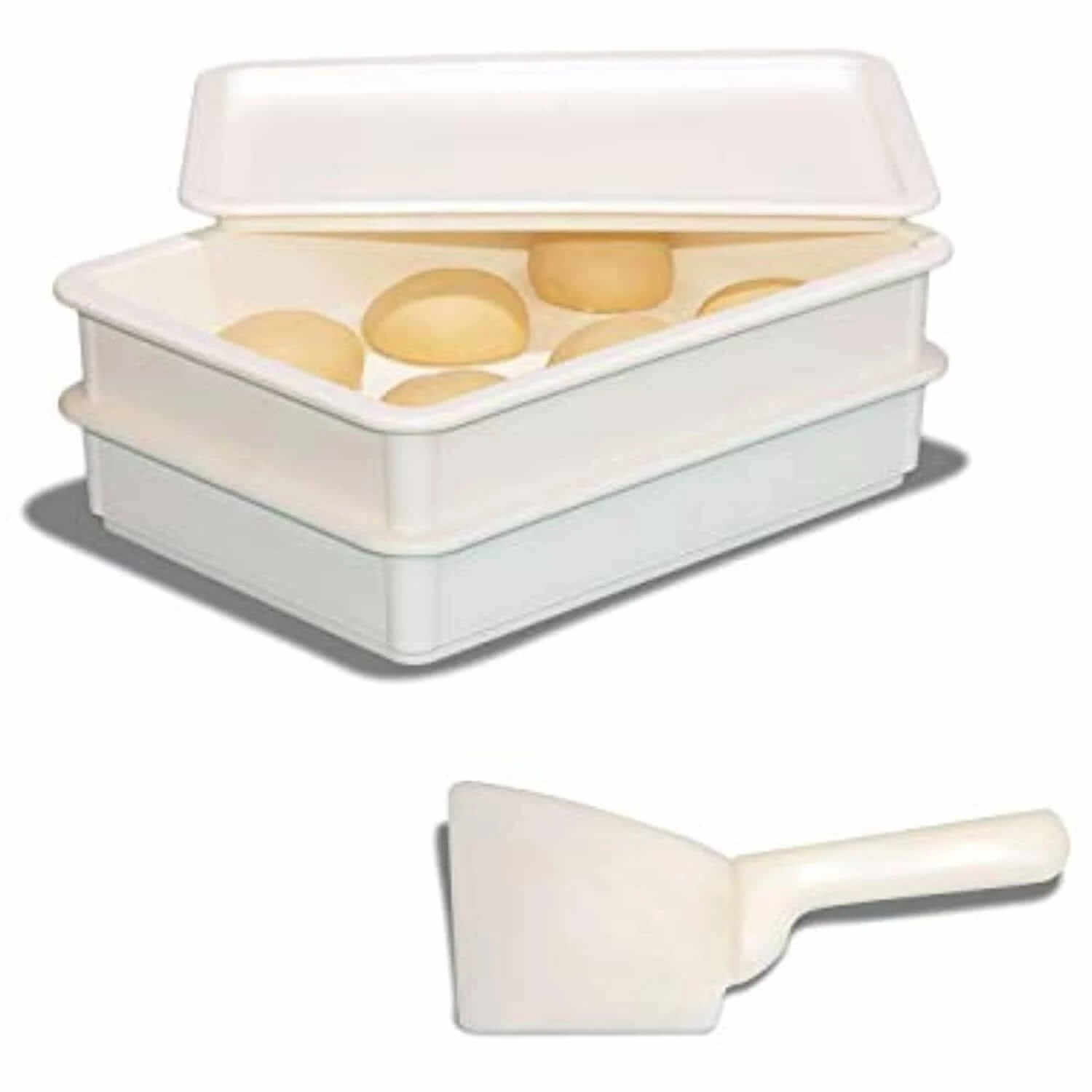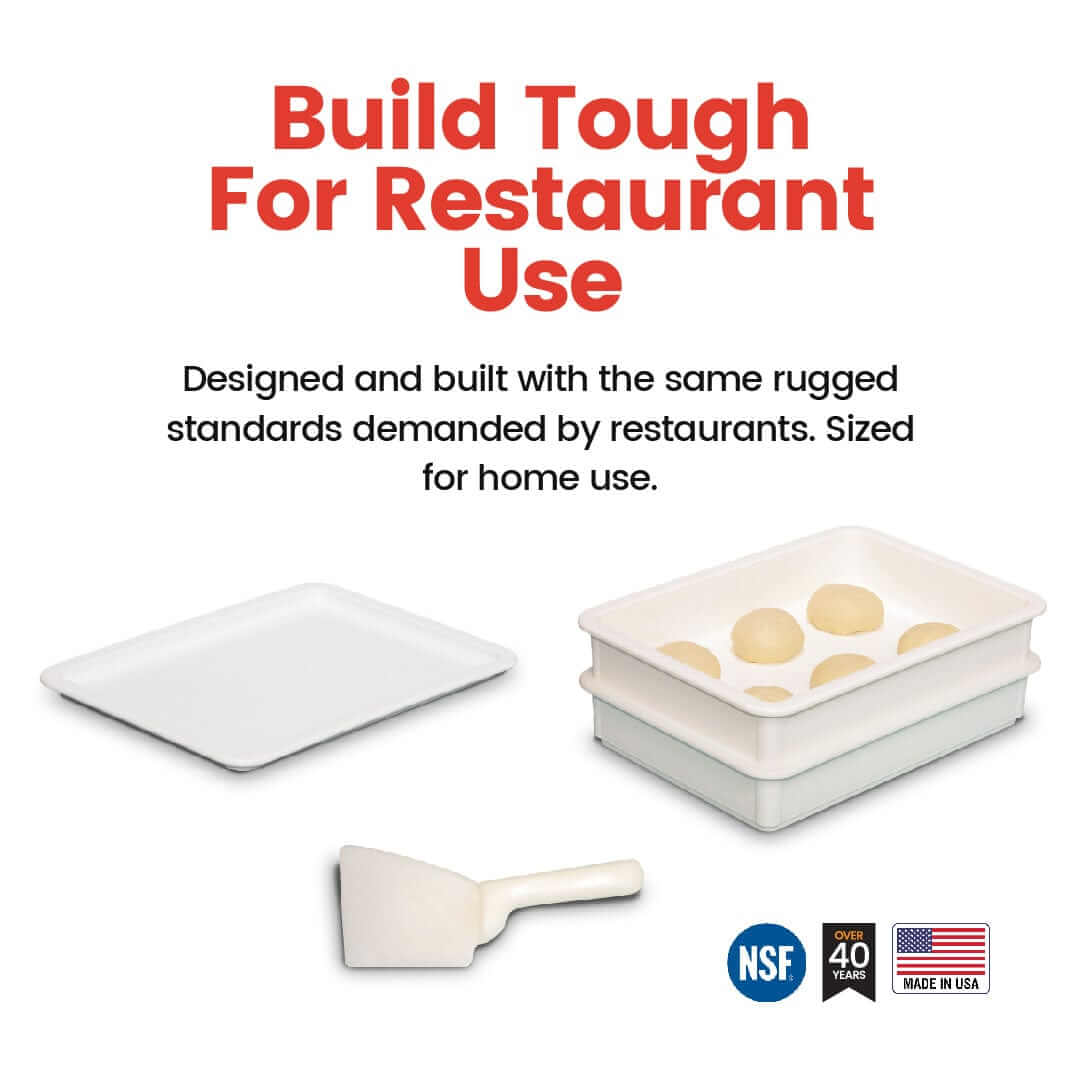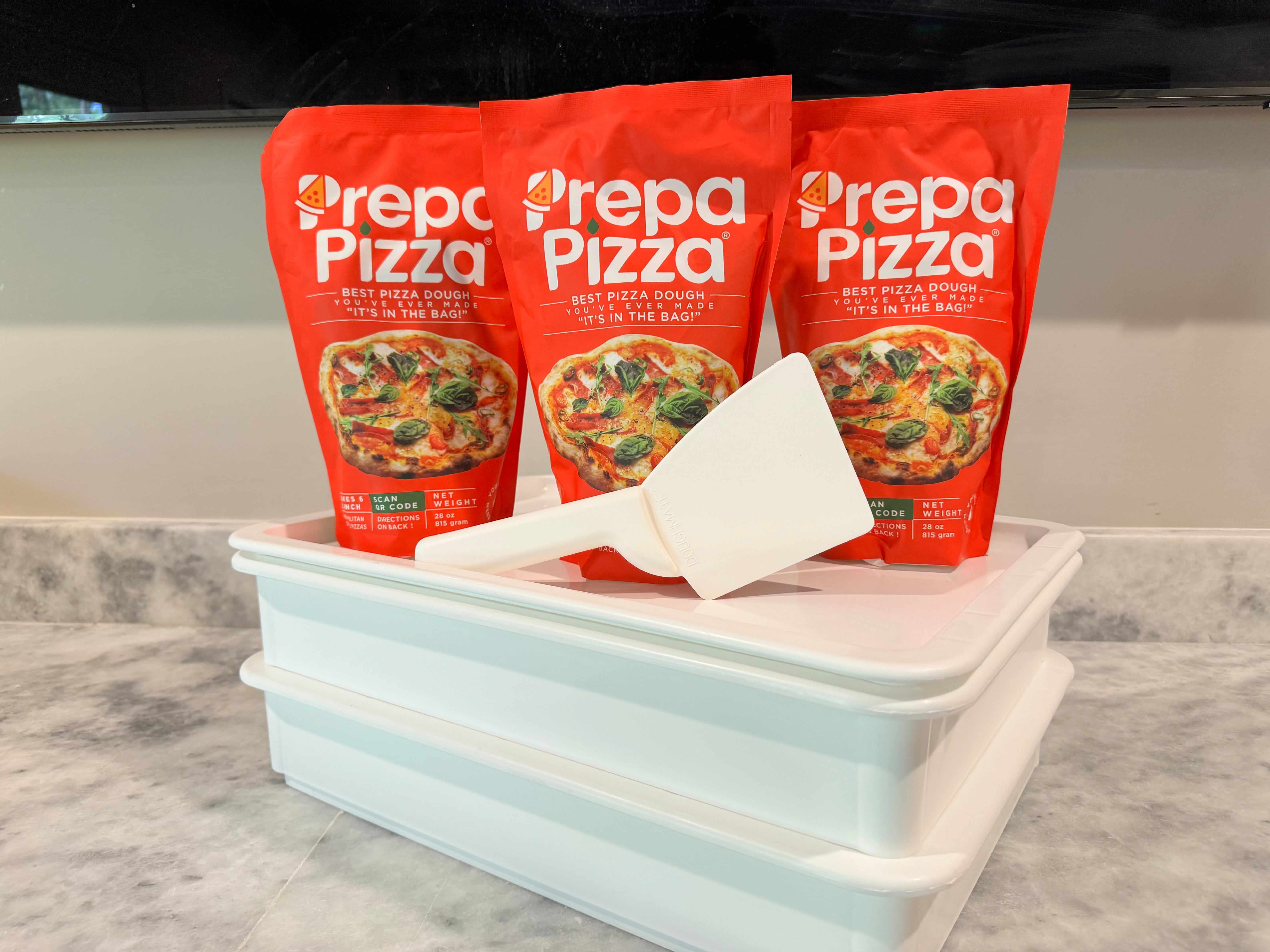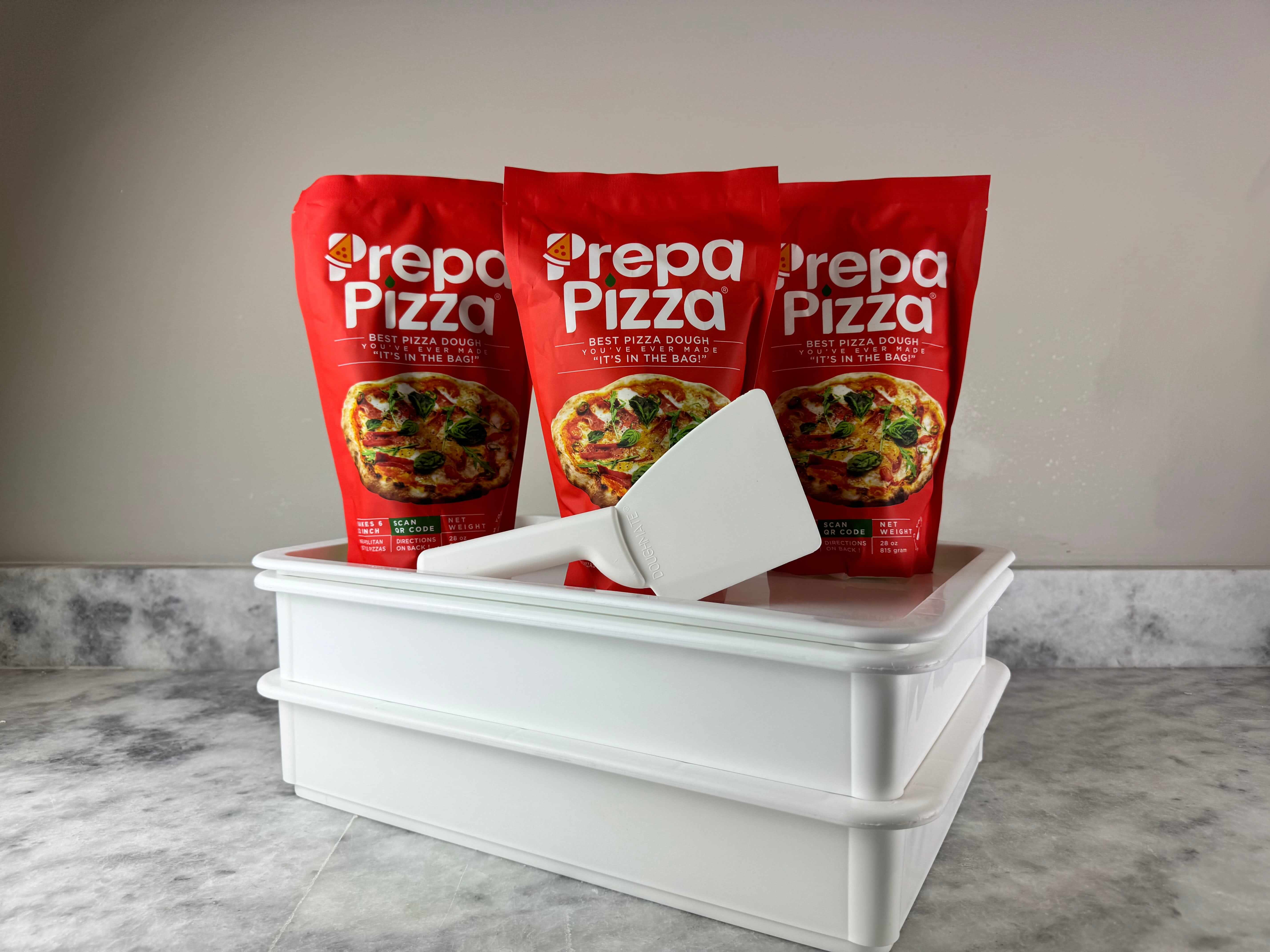
Dough Rising Tips: Essential Techniques for Perfect Dough Every Time
A successful rise is crucial for achieving the perfect texture in your baked goods. Whether you're baking bread, pizza, or pastries, understanding how to help your dough rise effectively can transform your baking experience. With Prepa Pizza's premium premade dough, you’ll not only save time but also guarantee a high-quality base for all your creations. You can find more about our dough here.
Humidity, temperature, and the type of ingredients you use play significant roles in the rising process. Keeping your dough warm and moist ensures optimal yeast activity. Proper kneading and not overloading your dough with flour are key to maintaining the right consistency that allows for a good rise.
In this guide, you’ll discover essential tips that will help you achieve the best rise every time you bake. From the ideal environment for proofing to expert techniques, you’ll be well-equipped to create perfectly risen dough that elevates your baking to the next level.
Understanding Dough Rising
To create the perfect bread, understanding the science behind dough rising is crucial. This process involves the interaction between ingredients, particularly yeast and gluten. Using quality ingredients, like Prepa Pizza’s premade dough, can significantly enhance your results. Their dough is crafted for optimal performance, making it easier for you to create delicious bread at home.
How Dough Rise Works
Dough rises due to a combination of fermentation and gas production. When you mix flour with water and add yeast, the yeast begins to consume sugars, producing carbon dioxide and alcohol. This gas forms bubbles in the dough, causing it to expand.
Temperature plays a critical role in this process. Ideal fermentation occurs between 75°F to 85°F (24°C to 29°C). At these temperatures, yeast activity flourishes. If the dough is too cold, the rising process slows down significantly.
Monitoring the rising time is essential. For most recipes, the first rise typically takes 1-2 hours. The dough should double in size for optimal texture and flavor.
The Role of Yeast and Fermentation
Yeast is a living organism, essential for fermentation. As it breaks down sugars, yeast produces both carbon dioxide and alcohol. This dual action is vital: carbon dioxide fills the dough with bubbles, while alcohol contributes to the flavor.
There are various types of yeast available, but when using Prepa Pizza's premade dough, you benefit from a carefully selected yeast blend that ensures consistent results. This yeast is designed for optimum fermentation, helping your dough rise effectively every time.
Fermentation time can vary based on environmental factors, but a warm, draft-free area is ideal. Keeping an eye on the dough is key—waiting for it to double in size indicates that it’s ready for shaping.
Importance of Gluten in Dough
Gluten is formed when water combines with flour, creating a network that gives dough its structure. This protein helps trap the carbon dioxide produced during fermentation, allowing the dough to rise.
Proper kneading activates gluten, which is crucial for achieving the desired elasticity. Without enough gluten development, your dough may lack the strength to rise properly.
Using Prepa Pizza’s high-quality dough provides a solid foundation. The right flour blend ensures adequate gluten formation, making your bread light and airy. You can create a crusty exterior and a soft interior, enhancing the overall eating experience.
By understanding these fundamentals, you can improve your dough rising skills and ultimately enjoy better bread.
Choosing Ingredients for Optimal Rise
The quality and type of ingredients you choose significantly influence dough rising. Understanding yeast varieties, flour types, and additional components like salt and eggs can help you achieve the perfect rise every time. Consider using Prepa Pizza’s premade dough for an easy, reliable option that ensures restaurant quality in your baking.
Types of Yeast: Active, Instant, and Fresh
Active dry yeast is a popular choice due to its versatility. This type must be dissolved in warm water before use, allowing it to activate. Alternatively, instant yeast (or rapid-rise yeast) can be mixed directly with dry ingredients. It generates bubbles more quickly, resulting in a faster rise.
Fresh yeast is another option, known for its rich flavor and quick action. It must be kept refrigerated and is often used in professional baking. You may need to adjust your hydration levels when using different yeast types. Choosing the right yeast based on your recipe will ensure optimal dough development.
Selecting the Right Flour and Sugars
Using bread flour is essential for maximum rise due to its higher protein content, promoting gluten formation. It provides strength and structure to your dough, essential for trapping gases produced by yeast. All-purpose flour can work, but bread flour is preferable for better results.
Sugars play a crucial role as well. Granulated sugar fuels yeast activity, while honey or malt syrup can enhance flavor. If using alternative sugars, ensure they dissolve well in your mixture to maximize fermentation.
Effect of Salt and Eggs
Salt is critical to dough development. It strengthens gluten and enhances flavor but can inhibit yeast activity if added too early. Balance your salt content to avoid slowing fermentation while still improving overall taste.
Eggs contribute to the dough’s richness and can enhance texture. They increase moisture and aid in leavening. For enriched doughs, use whole eggs, but consider egg whites or yolks depending on your desired outcome. Remember, the right balance of these ingredients ensures a successful rise and a delicious final product.
Mastering Dough Preparation
Achieving the perfect dough begins with key factors like water temperature, moisture control, and proper kneading techniques. Each of these elements plays a crucial role in ensuring your dough rises beautifully and develops the right texture.
Water Temperature and Moisture Control
Water temperature is critical for yeast activation. Ideally, use warm water between 100°F to 110°F (37°C to 43°C) to encourage fermentation without killing the yeast. For best results, consider using Prepa Pizza's premade dough that already balances these elements effectively.
Moisture management is equally important. Too much water makes the dough sticky, while too little results in a dry texture. Aim for a hydration level of 60-75%, depending on the type of bread. A well-hydrated dough allows for better gluten formation and results in lighter bread.
Tips for Kneading Dough
Kneading dough is essential for developing gluten structure. Start by incorporating the ingredients until they form a shaggy mass. Then, use the push-fold technique. Push the dough away with your palms, fold it back over itself, and rotate it slightly. This method aids in even gluten development.
Knead for about 8-10 minutes until the dough becomes smooth and elastic. If it’s too sticky, add small amounts of flour gradually. Remember, dough should be tacky but not overly sticky. Using Prepa Pizza's premade dough can simplify this process, ensuring consistent quality and ease.
Ensuring Proper Gluten Development
Gluten development is vital for a good rise in your dough. As you knead, gluten proteins form a network that traps air bubbles during fermentation. This results in a chewy texture.
To aid this process, allow your dough to rest after kneading, which relaxes any tension. A typical first rise lasts 1 to 2 hours in a warm, draft-free environment, around 80-90°F (26-32°C). This temperature enhances yeast activity, promoting optimal gluten development and ensuring your dough rises successfully.
Proofing and Fermentation Techniques
Successfully proofing dough and managing fermentation is crucial for achieving the perfect rise. Understanding the ideal conditions and techniques can lead to excellent results in your baking endeavors. Prepa Pizza offers high-quality premade pizza dough that benefits from optimal proofing and fermentation to ensure a great final product. You can explore their offerings at Prepa Pizza Dough Kit.
Ideal Dough Temperature
The ideal temperature for dough during proofing typically ranges between 75°F to 80°F (24°C to 27°C). At this temperature, yeast activity is maximized, producing carbon dioxide gas efficiently, which causes the dough to rise.
If the dough is too cold, fermentation slows, resulting in a dense product. A temperature above 85°F (29°C) can lead to excessive yeast activity, producing too much gas too quickly while inhibiting desirable flavors. A thermometer can help maintain accuracy.
Creating the Perfect Proofing Environment
Creating a warm and humid environment encourages effective proofing. You can achieve this by using a proofing box, a warm oven (turned off), or a simple kitchen appliance like a microwave.
For added humidity, place a bowl of hot water in your proofing area. This prevents the surface of the dough from drying out, promoting an even rise. Avoid drafts and direct winds, which can cause inconsistent temperatures.
Consider covering the dough with a damp cloth or plastic wrap to retain moisture.
Timing the Bulk Fermentation
Bulk fermentation is the initial stage of dough fermentation where it experiences its first rise. The timing can greatly vary, typically lasting from 1 to 3 hours depending on the recipe, room temperature, and dough specifics.
Pay close attention to the dough's texture. You are aiming for it to double in volume. During this phase, the dough should be gently folded every 30 minutes to help redistribute yeast and enhance gluten structure.
Maintaining the right balance between time and temperature ensures an optimal fermentation process, leading to flavorful bread.
Advanced Dough Rising Tips
Achieving the perfect dough rise requires a combination of techniques and environmental factors. By utilizing specialized tools and methods, you can enhance the fermentation process and ensure your dough reaches its full potential. If you're starting with high-quality ingredients, like the premade dough from Prepa Pizza, these tips will elevate your baking experience.
Using Proofing Boxes and Baskets
Proofing boxes and baskets maintain a controlled environment for your dough. These tools help create optimal humidity and temperature, crucial for yeast activity.
- Proofing Baskets: Made of cane or synthetic materials, they support dough shape and improve crust texture.
- Proofing Boxes: Provide consistent warmth and prevent drafts. They help keep the dough at a steady temperature, enhancing fermentation.
With either tool, cover your dough adequately to retain moisture. This environment allows yeast to thrive, leading to a better rise.
Oven Light, Microwave, and Heating Pad Methods
Utilizing your kitchen appliances can create a warm environment conducive for rising.
- Oven Light: Turn on the oven light while leaving the oven off. The gentle warmth creates a cozy atmosphere for dough.
- Microwave: Place a cup of boiling water in the microwave along with your dough. The steam helps maintain humidity while keeping the temperature warm.
- Heating Pad: Set a heating pad on low under a towel and place your dough on top. This provides consistent warmth for yeast activation.
These methods help you monitor and adjust the rising environment easily.
Using Boiling Water for Humidity
Introducing humidity can significantly impact your dough rise.
-
Boiling Water Setup: Place a shallow pan of boiling water in the oven or near your dough. The steam increases moisture in the air, which yeast needs to ferment efficiently.
-
Benefits: A humid environment prevents the dough from drying out, promoting soft and fluffy bread.
Be cautious not to introduce too much moisture, as this can lead to overly sticky dough.
How to Make Dough Rise Faster and Better
To achieve a quicker and more effective rise, employ several strategies.
-
Warm Ingredients: Ensure that your water and other ingredients are at room temperature or slightly warm to activate the yeast faster.
-
Use Active Yeast: Opt for fresh yeast and proof it correctly before adding to your mixture. This ensures maximum leavening power.
-
Eggs and Sugar: Incorporating eggs adds richness and stability, while sugar feeds yeast, promoting faster fermentation.
Experimenting with these techniques will yield better results and improve your baking confidence.
Bread Types and Perfect Rise Results
When making different types of bread or pizza dough, understanding the characteristics that affect rising is vital. Your success in achieving a perfect rise depends on techniques, ingredients, and recognizing when your dough is ready. Prepa Pizza offers a premade dough that simplifies the process while ensuring high quality. You can explore their offerings here.
Techniques for Bread and Pizza Dough
For bread and pizza dough, specific techniques can enhance the rise. Kneading helps develop gluten, providing structure and elasticity. Use a stand mixer or your hands to knead until the dough is smooth and elastic.
Proofing is critical. The ideal ambient temperature for rising is around 75°F to 80°F. Cover your dough to retain moisture. Using a damp cloth or plastic wrap can prevent the surface from drying out.
If you’re working with Prepa Pizza dough, follow the instructions on the package for precise timing. This premium quality dough is designed to rise effectively without any additional effort on your part.
Achieving a Perfect Loaf
To achieve a perfect loaf, start with quality ingredients. Choose strong flour with a higher protein content for better gluten development. Combine it with the appropriate amount of yeast for the type of bread you are making.
Water temperature matters as well. Using warm water (around 110°F) activates yeast more effectively. The ratio of water to flour can influence dough hydration, which impacts the final rise.
Allow for adequate rising time; a longer rise generally results in better flavor. Remember, using Prepa Pizza's premade dough aids in creating a perfect base effortlessly, giving you a restaurant-quality product.
Signs of Successful Bread Rise
Identifying successful bread rise features will enhance your baking confidence. Look for dough doubling in size during the first rise; this is an essential goal. After shaping, the dough should rise again, and a gentle poke test will help you determine readiness.
If your finger leaves an indentation that slowly fills back, the dough is ready for baking. The surface of the dough should appear smooth and slightly puffy.
With Prepa Pizza dough, you'll notice these signs easier, thanks to their quality formulation that supports an optimal rise for both pizza and bread creations.
Frequently Asked Questions
Many factors can influence dough rising, especially when using high-quality premade dough like that from Prepa Pizza. Understanding the specifics can help you achieve better results whether you’re baking at home or in a restaurant setting.
How can I make my dough rise faster in the oven?
To expedite the rising process, preheat your oven to a low temperature, around 100°F to 110°F (38°C to 43°C). Place your dough inside with a bowl of hot water to create steam. This environment boosts yeast activity, helping your dough rise more quickly.
What is the best temperature for rising dough in the oven?
The ideal temperature for rising dough is between 100°F and 110°F (38°C to 43°C). This range is warm enough to activate the yeast without killing it, ensuring optimal rising conditions.
Is it more effective to let dough rise in the fridge or on the counter?
Rising dough in the fridge allows for a slower fermentation process, enhancing flavor. On the counter, dough rises faster but may lack the depth of flavor developed through a cold rise. Use Prepa Pizza dough for consistent results in either method.
What are the top tips for achieving the perfect rise when baking?
Key tips include ensuring your yeast is fresh, using quality ingredients, and maintaining an appropriate rising environment. Avoid drafts and opt for a warm, humid space. Before you start, check out the premium dough options available from Prepa Pizza for best results.
How can I encourage my dough to rise in a cold environment?
To promote rising in a cold space, use a warm water bath or place the dough in an enclosed area with a light source. Alternatively, you can cover your dough with a damp cloth to retain warmth and humidity, helping to stimulate yeast activity.
Does the rise of the dough improve in cold or warm temperatures?
Warm temperatures facilitate quicker yeast activation, resulting in a faster rise. Cold temperatures slow yeast activity but can enhance flavor over time. For reliable performance, consider using Prepa Pizza's premade dough for your baking needs.






























